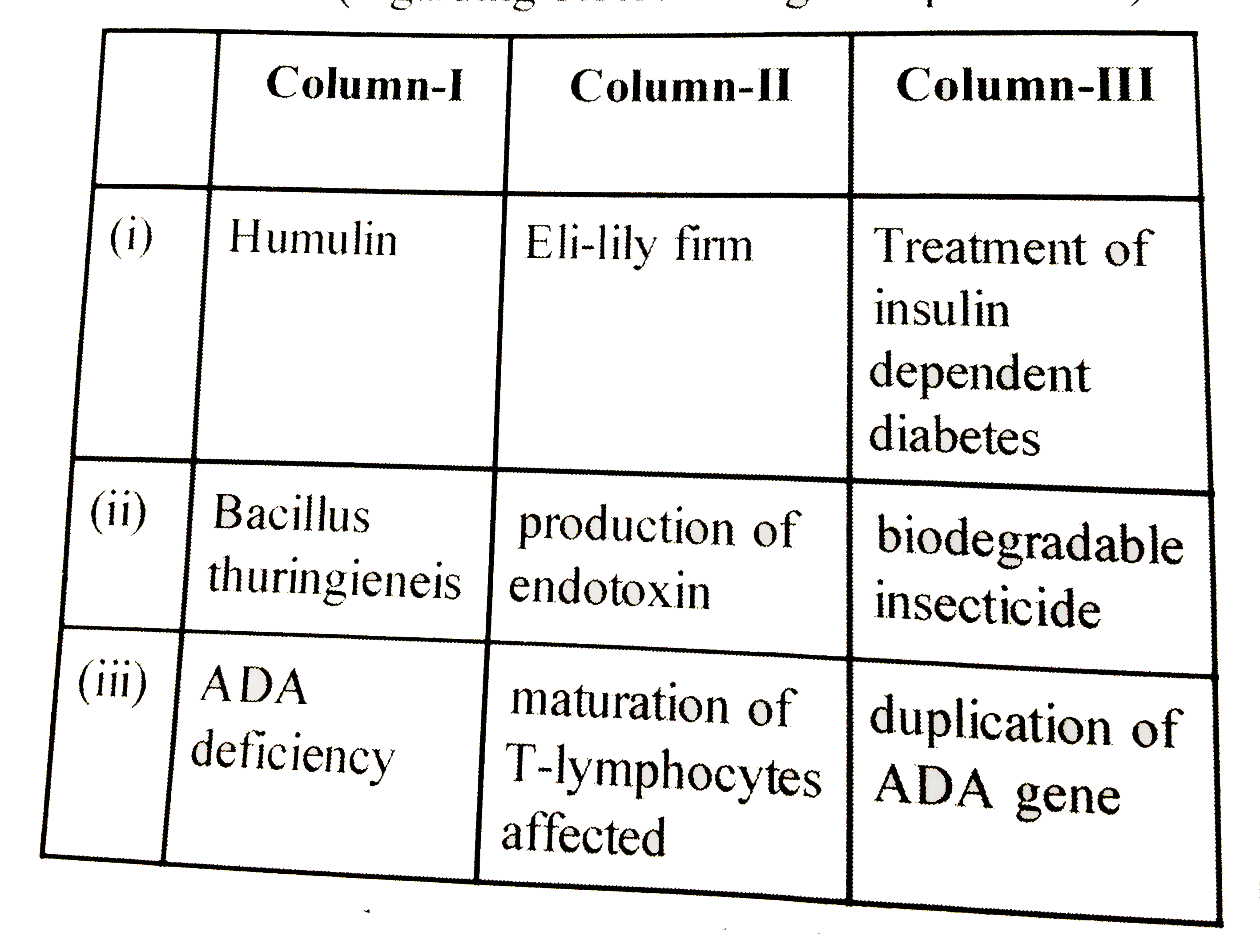Find out the correct match from the following
StructurePhylumFunctionComb platesCnidariaLocomotion
StructurePhylumFunctionCnidocytesCtenophoraDefence
StructurePhylumFunctionSetaeAnnelidaMovement
StructurePhylumFunctionAristotle's lanternMolluscaTo produce light
The correct Answer is:C
To solve the question, we need to identify the correct matches between structures, their corresponding phyla, and their functions. Let's analyze each option step by step.
Step 1: Analyze the First Option
- Structure: Complates
- Phylum: Nadavia
- Function: Locomotion
Analysis:
Complates are actually found in the phylum Ctenophora, not Nadavia. Therefore, this match is incorrect.
Hint: Remember that Complates are associated with Ctenophora, which is known for its locomotion.
Step 2: Analyze the Second Option
- Structure: Nidocytes
- Phylum: Ctenophora
- Function: Defense mechanism
Analysis:
Nidocytes are specialized cells found in the phylum Cnidaria, not Ctenophora. They are used for defense. Therefore, this match is also incorrect.
Hint: Nidocytes are characteristic of Cnidaria, which includes organisms like jellyfish.
Step 3: Analyze the Third Option
- Structure: Cete
- Phylum: Annelida
- Function: Movement
Analysis:
Cete (or setae) are indeed found in Annelida and are used for locomotion. This match is correct.
Hint: Cete are hair-like structures that aid in movement for segmented worms in Annelida.
Step 4: Analyze the Fourth Option
- Structure: Aristotle's lantern
- Phylum: Mollusk
- Function: To produce lights
Analysis:
Aristotle's lantern is actually found in the phylum Echinodermata and functions as a chewing organ, not for producing light. Therefore, this match is incorrect.
Hint: Aristotle's lantern is a feeding structure in sea urchins, which belong to Echinodermata.
Conclusion
The only correct match from the options provided is:
- Structure: Cete
- Phylum: Annelida
- Function: Movement
Thus, the correct answer is the third option.
Final Answer
The correct match is:
- Cete (Structure) - Annelida (Phylum) - Movement (Function)
- Structure: Complates
- Phylum: Nadavia
- Function: Locomotion
Complates are actually found in the phylum Ctenophora, not Nadavia. Therefore, this match is incorrect.
- Structure: Nidocytes
- Phylum: Ctenophora
- Function: Defense mechanism
Nidocytes are specialized cells found in the phylum Cnidaria, not Ctenophora. They are used for defense. Therefore, this match is also incorrect.
- Structure: Cete
- Phylum: Annelida
- Function: Movement
Cete (or setae) are indeed found in Annelida and are used for locomotion. This match is correct.
- Structure: Aristotle's lantern
- Phylum: Mollusk
- Function: To produce lights
Aristotle's lantern is actually found in the phylum Echinodermata and functions as a chewing organ, not for producing light. Therefore, this match is incorrect.
The only correct match from the options provided is:
- Structure: Cete
- Phylum: Annelida
- Function: Movement
The correct match is:
- Cete (Structure) - Annelida (Phylum) - Movement (Function)
Similar Questions
Knowledge Check
Find out the incorrect match
AE.coli−4.6×106bpBBacteriophage lambda-48502 base pairsChaploid content of human DNA−3.3×109bpDϕ×174-5386 base pairs
Find out the incorrect match
View SolutionFind out the incorrect match
View SolutionFind out the correct match in the following : Structure / Phylum / Function
View SolutionFind out the incorrect match.
View SolutionFind out the incorrect match.
View SolutionFind out the incorrect match .
View SolutionFind out the incorrect match.
View Solution

